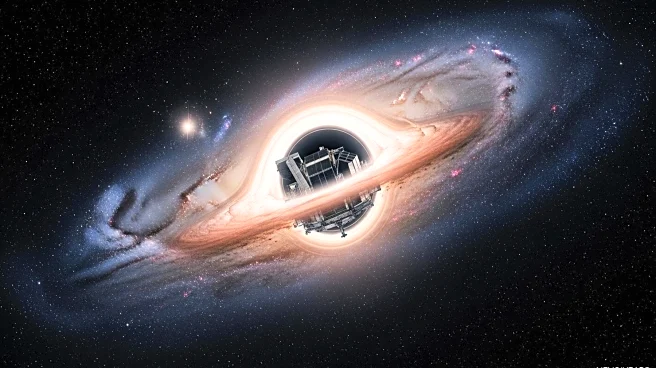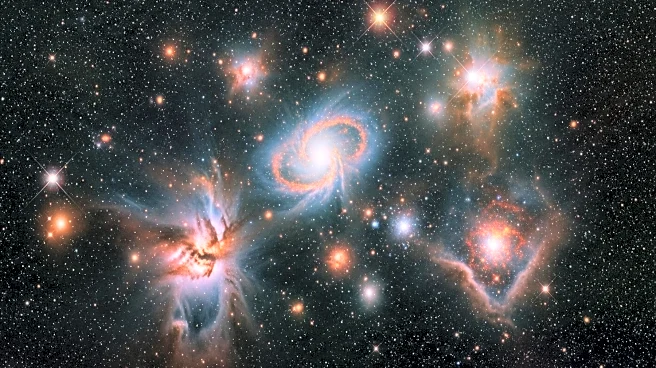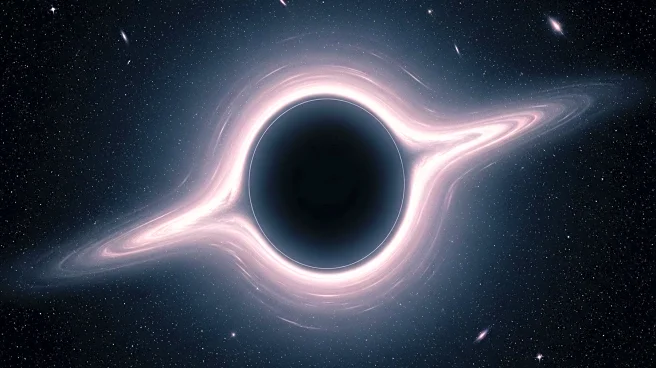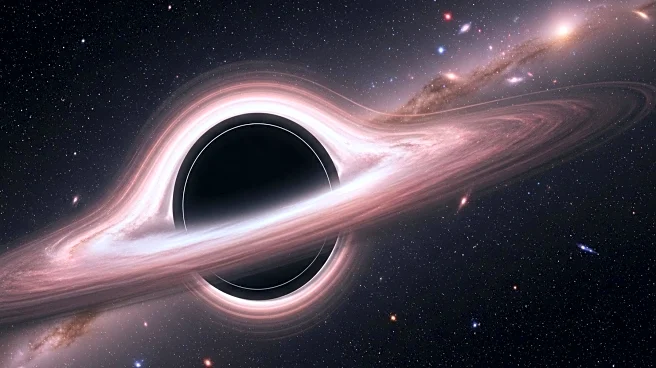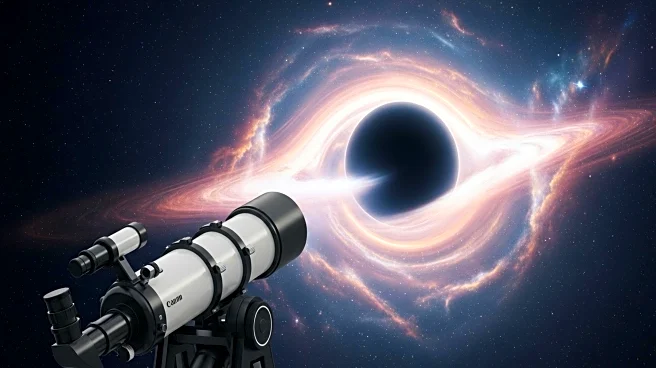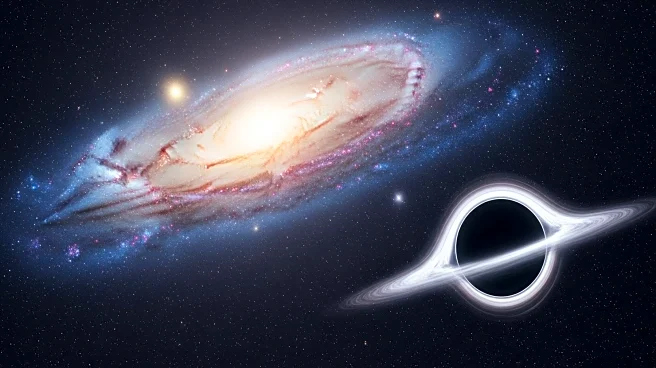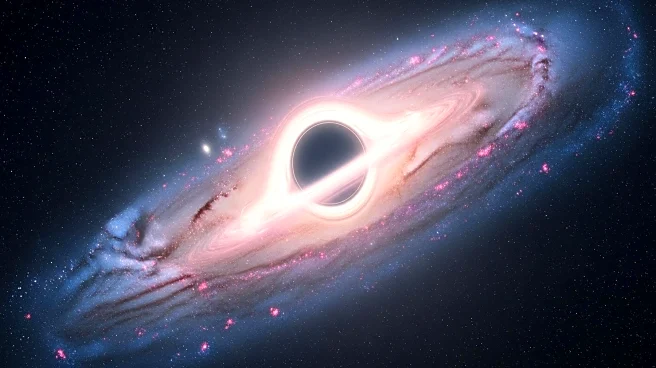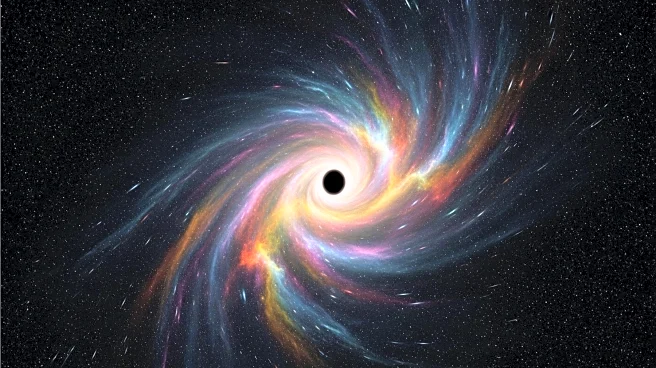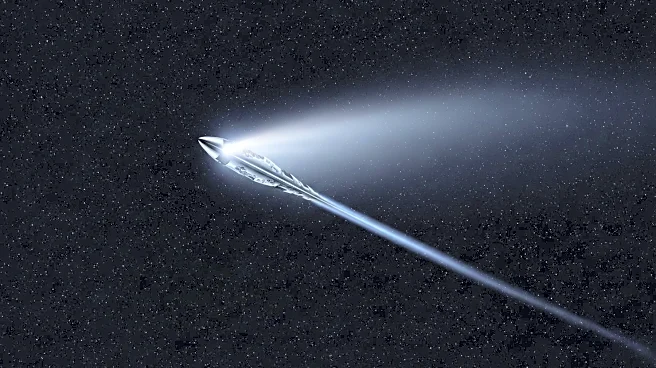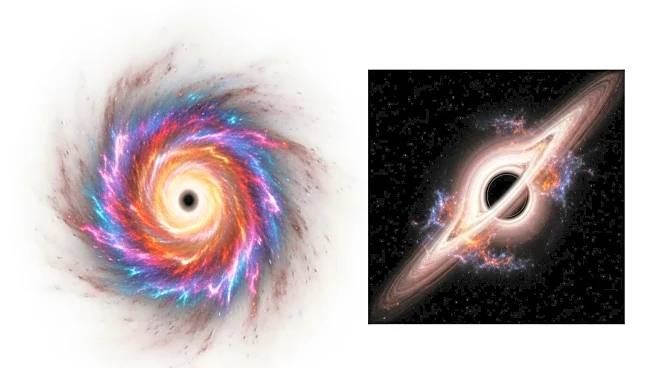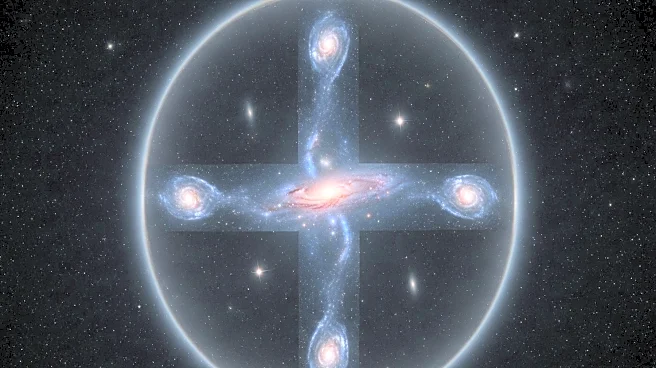What is the story about?
What's Happening?
Astronomers have identified a black hole growing at an unprecedented rate, using NASA's Chandra X-ray Observatory. Located 12.8 billion light-years away, the black hole is expanding at 2.4 times the Eddington limit, a theoretical maximum for growth. This discovery sheds light on how black holes can achieve massive sizes shortly after the Big Bang. The black hole, part of a quasar known as RACS J0320-35, is producing more X-rays than any other black hole observed in the early universe.
Why It's Important?
The rapid growth of this black hole challenges existing theories about black hole formation and growth. Understanding the mechanisms behind such growth could provide insights into the early universe's conditions and the processes that lead to the formation of supermassive black holes. This discovery has implications for astrophysics, potentially influencing models of galaxy formation and evolution.
What's Next?
Researchers will continue to study RACS J0320-35 to understand the factors contributing to its rapid growth. Further observations and theoretical modeling will aim to uncover the conditions that allow black holes to exceed the Eddington limit. This research could lead to new theories about black hole formation and the dynamics of the early universe.
Beyond the Headlines
The discovery of RACS J0320-35 highlights the importance of advanced observational tools like the Chandra X-ray Observatory in exploring cosmic phenomena. It underscores the need for continued investment in space telescopes and international collaboration to unravel the mysteries of the universe.
AI Generated Content
Do you find this article useful?
